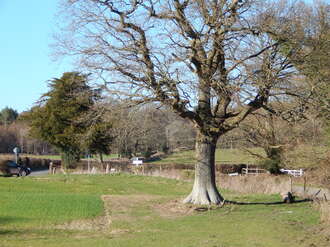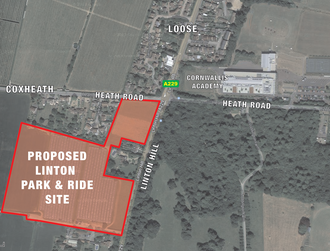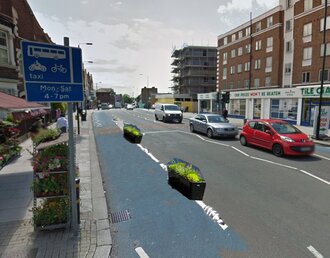-
Havant Road crossingThe lack of a pedestrian crossing of any description concerns me and other residents/parents greatly. As I said above, this is a main school route for parents walking their children to the local Infant and junior schools. As a househusband, I also walk my 6 and 9 year old to these schools every day. I designed a simple petition and collected nearly 200 signatures requesting the council to install an official pedestrian controlled crossing. I sent the petition off a long time ago, and have had numerous emails and telephone calls to, and from various people at Portsmouth City Council, local MP’s, local councillors and both head teachers, all supporting myself and other residents for our wish to see a crossing installed, but so far nothing has been done. At a recent council meeting, I was informed that there had been a cut in funding, and although my proposal for a crossing wasn’t dismissed outright, I quote from an email from the council that;- “this scheme has been put forward and we will await confirmation of the 2014/15 LTP programme early next year after proposals are taken to Cabinet. This usually occurs annually around March. After scheme submission, officers have little involvement and await feedback from senior managers early next year.” On a relevant issue, my son's friend got knocked over on Havant Road a few years ago, albeit at the pedestrian crossing near the small Tescos and Post Office further along Havant Road. Yet this simply reiterates the need for an official crossing, proving that this road is a busy thoroughfare, and accidents can happen even when there are pedestrian crossing installed. So to avoid another accident, there must be a pedestrian controlled crossing installed.628 of 800 SignaturesCreated by Simon Thornton

-
Turn Hereford Traffic Lights To Part-Time Status 7pm-7amAll of these traffic lights are relatively pointless during off peak times and often motorists become frustrated and impatient while being forced to sit at red lights, this can often be at 2am when there are clearly no other vehicles in sight! By signing our petition you are in strong favour of these signals being changed to PART-TIME status from 7pm-7am416 of 500 SignaturesCreated by Colin James

-
Get the Government to Renationalise Britains RailwaysWe are fed up with overpriced rail fares, over crammed trains, Train Companies not wanting to deal with passenger issues and Bosses getting large bonuses from passengers being used as cash cows124 of 200 SignaturesCreated by Graham Henderson
-
Stop live animals being exported for slaughterIf you have any feelings whatsoever for animals and the manner in which they end their lives as food for us, then you will care for their wellbeing.139 of 200 SignaturesCreated by Robert Forrest-Webb
-
STOP 2nd runway at gatwickTo save counless homes, conservation areas, the daily lives of innocent people, the farms its going to destroy, the pollution it will cause,165 of 200 SignaturesCreated by LORRAINE BRASS
-
Stur newton-Poole bus routeTo give us the opportunity to go where the work is, give our young people the widest choice to access education and to stop the gentrification of our rural areas.438 of 500 SignaturesCreated by Isabelle Allison
-
Halton Against TollsThe Runcorn Bridge connects two parts of the same town, Runcorn and Widnes, known collectively as Halton. The cost to local people who must use this bridge to go to work, to the hospital, to local shops, ice rink, cinema, cemetery, to Liverpool City and Airport, visit relations and many other reasons, the people of Halton will have to pay a local tax otherwise known as a toll. A voucher system has been offered giving locals a small discount but the bridge should be toll free for all.11,232 of 15,000 SignaturesCreated by Vince Clark
-
DALMAHOY TRAFFIC LIGHTS NEEDEDExit from Dalmahoy and Ratho (road opposite) onto A71 is life threatening and one day someone will die and then it will be too late. An offer of a SLOW DOWN sign is not good enough after 15 yrs of complaining.The morning rush hour traffic is horrendous with no one giving way and the cars pile up the roads on either side. Maybe someone could just try this out and see how they feel risking their lives just trying to get home.2,132 of 3,000 SignaturesCreated by Margaret Delaney
-
No Park and Ride at LintonHeath road where the site is proposed is an established boundary helping to maintain the vital balance between urban and rural areas. Dumping thousands of tons of tarmac over 17 acres of prime farmland near the Greensands Ridge breaches that boundary and threatens our rural heritage. And worse still, for no proven benefit.1,208 of 2,000 SignaturesCreated by Ron Leagas
-
Let's make Tooting High Street safe for allTooting High Street is an 'A' road, and as such is an important route for people moving both within, and passing through the area. The width of the road, not including the pavement, varies from 10m to 12m in width (from Tooting Broadway to the junction with Blackshaw Road). Using this road, on foot, or by bicycle is not straightforward. We believe space exists for high quality separated cycle routes to be placed on the road ensuring that people of whatever age or ability can choose to cycle locally. 'Armadillos' and planters which have been used on Royal College Street in Camden have been super-imposed onto the visual to give a simple idea of what could be. Parking/delivery bays can be provided from adjacent roads. The space currently used between buses and delivery bays could be re-purposed. This narrowing of the carriageway should result in lower speeds by motorists, and make it easier for pedestrians and the less able to cross the road. With 50% of car trips in London being less than or equal to two miles, many of those journeys could be cycled if the streets were designed in a more inviting manner. Local businesses suffer from the dominance of motor traffic that the current street design facilitates. A more inviting and attractive public realm would boost footfall, and in turn increase trade for local businesses. We need to show significant local support for this so that TfL listen to us and can ensure the next update / resurfacing includes installing proper cycle tracks. This post from the Cycling Embassy of Great Britain illustrates how using existing legislation, officers can install high quality cycle tracks: http://www.cycling-embassy.org.uk/blog/2013/07/26/a-view-from-the-drawing-board-cycle-track-priority-across-side-roads Supported by Wandsworth Cycling Campaign, Wandsworth Living Streets and Tooting Lib Dems604 of 800 SignaturesCreated by Jon Irwin
-
Bus service for Finchley Memorial HospitalWe have a brand new, gleaming hospital which people cannot reach because it is not on a bus route. Many of the services based there: physiotherapy, falls prevention, community dieticians, are geared towards people who are frail and cannot walk long distances. 500m might not seem a long distance for most people, but on a zimmer frame or crutches it is forever. Parts of the hospital are empty because local GPs do not want to move to a building which their patients cannot access. The plans for this building always included a bus stop, but what we need now is a bus which will actually stop outside the hospital door. There is a cross party consensus that this needs to happen urgently. Please add your voice so the Mayor of London understands how important this is. Thanks.2,023 of 3,000 SignaturesCreated by Julia Hines
-
Ban Cars from Richmond ParkRichmond Park is a National Nature Reserve, an SSSI and a Grade 1 Listed landscape. The weekend closure would not only enhance the experience for cyclists and other users but would also promote the conservation, protection and improvement of the natural and physical environment of the Park, and its peace and natural beauty for the benefit the public and future generations. The park is a great asset for SW London, it should be a safe place for families to explore and for people to ride bicycles around without having the roads jammed up with cars.1,369 of 2,000 SignaturesCreated by Mike Head
Hello! We use cookies to improve your experience by providing insights into how the site is being used. Find out more.












